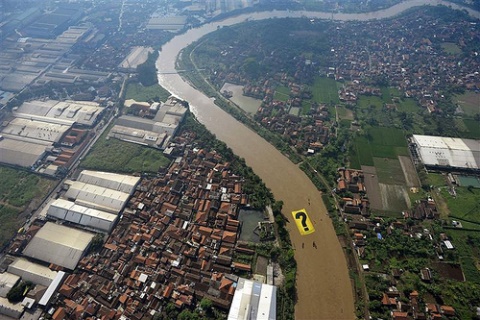In order to commemorate the world water day in March, 22, the Ministry of environment (MOE) publish the monitoring results of river water quality throughout Indonesia. Based on monitoring in 57 river in 33 provinces, the conclusion is 80 % river polluted with heavy, light and medium level. This result was worse than the percentage of pollution in 2012, i.e. 75,2%.
“In its implementation, the MOE using 20 parameters refers to GR (Government Regulation) No. 82/2001. The river water quality in most parts of the province containing organic beyond quality standards, with BOD (Biological Oxygen Demand) 25 mg/l, said Deputy VII MOE, said Deputy VII MOE, Henry Bastaman in his publications, Jakarta (2/3). Water pollution level monitoring that routinely conducted by MOE with support from accredited laboratory since 2008 is evaluated using Storet method, who compares between water quality data with water quality standards, which adapted to determine the water status.
Henri explained that in each river there are six sampling point, measured periodically five times in a year. He gave example of the river is in the populous neighborhoods, such as the Ciliwung, Cisadane and Musi are likely to be contaminated by domestic waste household. He gave the example of the river located in the populous neighborhoods. While river close to industrial zones, such as Citarum in West Java, Krueng Tamiang in Aceh and Fly in Papua Province polluted by non domestic waste.
Raymond valiant, Technical Director of Perum Jasa Tirta I also strengthened this report pollution. Raymond took example on pollution in Kali Brantas, East Java. In this 320 km river, which became a water source for 16 million people produce 330 tons of waste per day. 62% of the wastes came from the domestic sector, and the rest from the industrial emissions.
Meanwhile, in opening speech at Monitoring Water Quality (PKA) technical meeting, which took place in Bengkulu, March, 24-26. Minister of Environment, Balthasar Kambuaya invites all to actively participate in river pollution control. “The efforts we’ve done although not significantly improve the water quality, but at least we successfully resist and even reduce the rate burden number. We should appreciate this, but don’t get complacent quickly.” said Balthasar. Azhari Fauzi
